The Ariel, first sold in 1871, was one of the very first bikes to be called a highwheel, after a short period of ‘transitional boneshakers’, a period of a year or so in which the boneshaker evolved into the all-metal penny farthing.
This Ariel, designed bij James Starley and William Hillman, was certainly the most succesful of the early bikes. It is easy recognisable, as it has a unique system of ‘tension spokes’. All spokes are attached to the hub, go in a straight line to the rim, where they make a turn and return to the other flange of the rim. Tensioning happens with the 2 lever bars. That means, all spokes are tensioned exactly the same. Doesn't sound ideal to me but it seemed to work in those days.
In the first years it was built by Smith & Starley, but in 1875 Haynes & Jefferis (two former foremen of Starley) took up the license. They continued building it for some more years, at least until 1877. You can see the later model here.
The bicycle you see in the pictures is quite unique. It has a small wheel size of 38 inch and those very small bicycles had only one tension bar.
It still has the solid backbone of 1871- early '72. In the april catalogue of 1872 The Ariel was the first British bicycle with a hollow backbone: other makers followed soon. In the lever bar you can read Smith, Starley & Co. and a logo is stamped in the front fork sides and the spring.
The illustration from the 1872 catalogue shows the version with 2 lever bars: 40 inch and up.
The saddle spring of this Ariel is adjustable in height by moving it up or down on the backbone: a feature that disappeared in 1873. The bicycle still has some gold (or yellow) striping.
There is only one other Ariel of this age known, it was sold in 2014 by Transport Collectors Auctions.
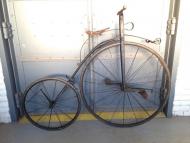 | 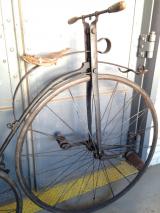 | 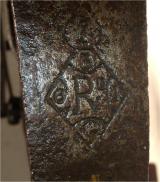 |
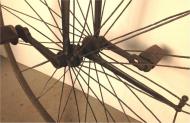 | 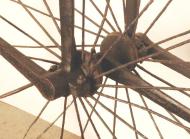 | 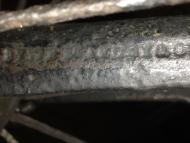 |
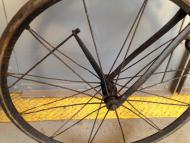 | 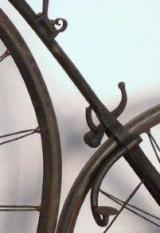 | 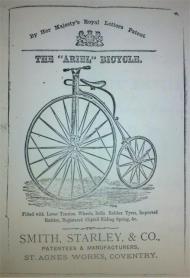 |